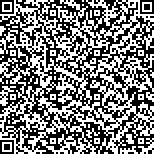下载中心
优秀审稿专家
优秀论文
相关链接
摘要

多房棘球绦虫(Echinococcus multilocularis)的幼虫期导致罕见而致命的肝病即人类的泡型包虫病(HAE)。绦虫在狐狸(或狗类)与一些小型哺乳类动物之间以寄生虫-寄主的方式进行循环传播。中国中部一些地区的人类泡型包虫病属于地方流行病,在部分乡村的发生概率达到15%。本文研究如何利用遥感数据并基于地区景观特性获取该流行病清晰地空间危害分布图。遥感数据分析的结果显示,人类居住地附近的草地或灌木是HAE传播的一个主要危险区域,从空间分布上看,这些区域是小型哺乳动物等中间寄主的聚集处。
The laval stage of the fox tapeworm Echinococcus multilocularis causes the rare but fatal liver disease Human Aleveolar Echinococcosis(AE).The tapeworm is transmitted in a predator-prey cycle between foxes(or dogs) and a range of small mammal species and is restricted to specific landscape conditions.HAE is endemic in parts of central China with prevalence rates of up to 15% in some villages.This paper describes how remotely sensed data have been used to develop spatially explicit risk maps for the disease based on landscape characterization.The results show that the proximity of grassland or shrubland areas to human settlements,derived from the remotely sensed data,was a major risk factor for HAE related to the spatial distribution of suitable habitat for the small mammal intermediate hosts.

